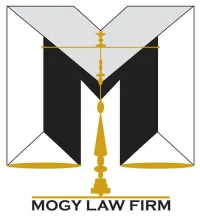Speeding in Tennessee Is a Growing Danger on the Roads
Speeding causes thousands of car accidents across Tennessee every year, leading to serious injuries, permanent disability, and death. Drivers who ignore speed limits or drive too fast for conditions put everyone at risk, from other motorists to pedestrians. The consequences are not limited to damage and trauma. Speeding often leads to legal action, financial loss, and long-term hardship for victims. Understanding how speeding affects crash severity, injury risk, and legal outcomes is critical for anyone involved in a car accident.
In this blog, we explain how speeding contributes to car accidents in Tennessee, the types of crashes it causes, the legal consequences for speeding drivers, and why working with an experienced Memphis car accident attorney can help you protect your rights and pursue fair compensation.
Speeding in Tennessee: The Alarming Reality
Speeding remains one of the most dangerous and consistent causes of car accidents in Tennessee. It affects all drivers, passengers, and pedestrians who use the roads every day.
Tennessee Speeding Statistics Show a Deadly Trend
Data from the Tennessee Department of Safety and Homeland Security confirms that speeding is a leading factor in fatal crashes across the state. According to recent reports, thousands of speed-related crashes occur each year. Many involve serious injuries or result in traffic fatalities. These accidents often include drivers losing control of their vehicles due to excessive speed.
Speeding Increases the Risk of Severe Injury or Death
Speeding drivers reduce their ability to safely steer and stop. A higher speed increases the momentum of a vehicle, which leads to greater crash severity. The impact is often more dangerous when occupant protection equipment such as seat belts or airbags fails or is used incorrectly. Victims in speeding-related crashes often face longer hospital stays and more severe outcomes.
Speed Limits Exist for a Reason
Tennessee law (TCA § 55-8-152) sets specific speed limits for highways, city roads, and rural areas. These limits are not suggestions. They reflect the safest maximum speed for each area based on road design and traffic flow. Ignoring speed limits creates speeding problems that threaten all roadway users, especially in areas with high pedestrian traffic or complex intersections.
Rural and Urban Roads Are Both Affected
Speeding is not limited to busy highways. Rural roads see a large number of speed-related crashes, often due to limited enforcement and reduced visibility. Urban areas also experience risky driving behavior such as aggressive driving, frequent lane changes, and speeding in the left lane. These actions increase the chance of collisions and make it harder for other drivers to react.
Speed Management Requires More Than Enforcement
While police patrols help enforce traffic laws, speed management programs also focus on setting speed limits and improving driver awareness. These programs aim to lower crash rates by adjusting speed zones based on real driving behavior. Tennessee continues to develop transportation safety strategies that target speeding as a contributing factor in serious crashes.
How Speeding Increases Crash Severity and Injuries
Speeding directly affects how severe a crash is and how badly people are injured during a car accident.
Higher Speed Reduces Reaction Time
When a driver speeds, they have less time to react to changes in traffic. The faster the vehicle moves, the shorter the time the driver has to respond. This delay makes it harder to avoid hazards like stopped traffic, curves, or pedestrians in the roadway. Speeding drivers often fail to safely steer or change lanes in time to prevent a collision.
Increased Speed Raises Stopping Distance
A speeding vehicle needs more distance to stop. The faster a vehicle travels, the longer it takes to slow down and come to a complete stop. This increased stopping distance leads to more rear-end crashes, especially in heavy traffic or near intersections. It also reduces a driver’s ability to respond safely when road users in front of them make sudden moves.
Crash Force Increases with Momentum
Speed increases momentum. When a crash happens at high speed, the force of the impact is stronger. This higher force causes greater damage to vehicles and more serious injuries to the people inside. In many fatal crashes, speed is a contributing factor because it increases the crash severity.
Safety Equipment Becomes Less Effective
Seat belts and airbags are built to protect people during moderate-speed crashes. At higher speeds, this equipment cannot fully absorb the impact. Occupant protection equipment is less effective when the crash force exceeds its design limits. This leads to more severe injuries, even for drivers and passengers who are buckled in.
Speeding Raises the Risk of Losing Control
The faster a car moves, the harder it is to control. Speeding reduces the driver’s ability to handle curves, wet roads, or sudden obstacles. Loss of vehicle control is common in speed-related crashes. Drivers who speed often misjudge how their car will react to the road, especially in poor weather or low visibility.
Common Types of Speeding-Related Accidents in Tennessee
Speeding increases the chance of many types of crashes, especially when combined with risky driving behavior or poor road conditions.
Rear-End Collisions from Reduced Stopping Distance
Rear-end collisions are common in speed-related crashes. When a driver follows too closely at high speed, they cannot stop in time if the car in front slows down or stops suddenly. The increased stopping distance makes it hard to avoid impact. These crashes often happen in traffic or at intersections.
Rollovers from Loss of Control
Speeding makes it easier to lose control, especially on curves or uneven roads. When a driver turns too quickly at high speed, the vehicle can tip or roll over. Rollovers are more likely in trucks, SUVs, and vehicles with a high center of gravity. These crashes often cause serious injuries or fatalities.
Side-Swipe Accidents During Lane Changes
Drivers who speed often make unsafe lane changes without checking blind spots or using signals. At high speed, even small steering mistakes can cause side-swipe crashes. These accidents are common on highways and involve vehicles in the left lane or passing too quickly.
Head-On Collisions from Crossing Center Lines
Speeding increases the risk of drifting into oncoming traffic. When a driver loses control, they may cross a center line or median. Head-on collisions often happen at full speed and have a high crash severity. These crashes are deadly for both drivers and passengers.
Intersection Crashes from Ignoring Signals
Drivers who speed through intersections often run red lights or stop signs. This leads to side-impact crashes, also known as T-bone collisions. These accidents are dangerous because the side of a vehicle offers less protection than the front or rear. Speeding drivers have less time to see traffic signals and react.
Legal Ramifications of Speeding in a Car Accident
Speeding can lead to serious legal consequences, especially when it causes injuries or death in a car accident.
Speeding as a Form of Negligence
In Tennessee, a speeding driver may be considered negligent if their actions lead to a crash. Negligence means the driver failed to use reasonable care. When a driver exceeds the speed limit or drives too fast for conditions, they increase the risk to other roadway users. This behavior is a clear contributing factor in many serious crashes.
Comparative Fault in Tennessee
Tennessee uses a modified comparative fault rule under TCA § 29-11-103. If both drivers share blame for a crash, the court assigns each a percentage of fault. A driver who is 50 percent or more at fault cannot recover damages. Speeding often pushes a driver’s share of fault higher, especially if they violated posted speed limits or traffic laws.
Criminal and Civil Penalties
Speeding can lead to traffic citations, fines, and points on a driver’s license. If the speeding caused a serious injury or fatal crash, the driver may face criminal charges. These can include reckless driving or vehicular assault. On the civil side, victims can file lawsuits to recover compensation for medical bills, lost wages, and pain and suffering.
Role of Police Reports and Evidence
Police reports often note whether speeding was involved in a crash. Officers may include speed estimates, witness statements, and damage analysis. This information helps car accident attorneys build a case against the speeding driver. Evidence from the scene such as skid marks, vehicle data, and camera footage also supports claims of driver negligence.
Why Legal Representation Matters
Victims of speed-related crashes benefit from hiring a car accident lawyer. Insurance companies often try to reduce payouts by shifting blame. An attorney can gather evidence, work with experts, and protect the victim’s right to compensation. In speeding cases, proving fault clearly and early is critical.
Contact an Experienced Memphis Car Accident Attorney Today!
If you or someone you care about has been injured in a crash caused by speeding, do not wait to take action. The consequences of a speed-related accident can be life-changing, and the legal process can be difficult to face alone. Our team at Mogy Law Firm has the experience, knowledge, and commitment to help you hold negligent drivers accountable and recover the compensation you need for medical bills, lost wages, and other damages.
Contact us at (414) 334-5472 for a free claim review!






